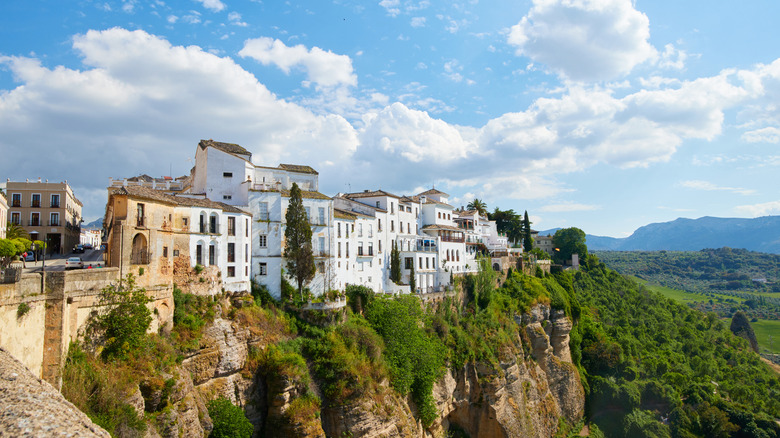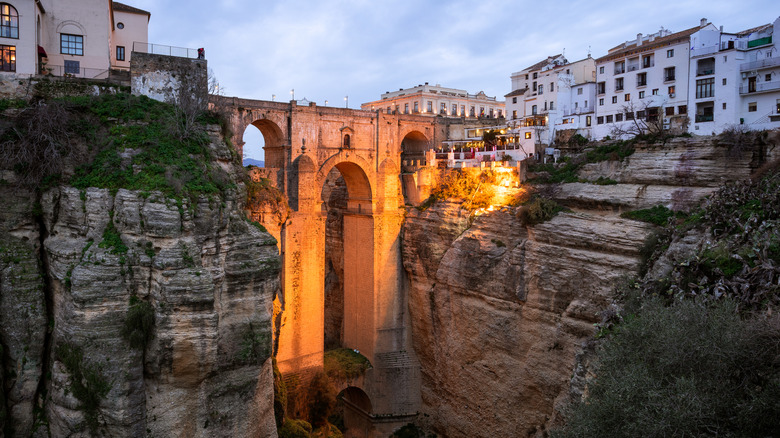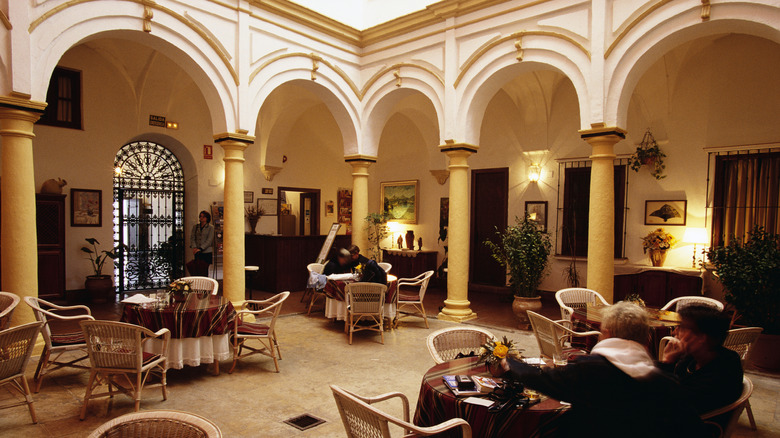The Most Beautiful White Hill Towns Rick Steves Says Are 'Steeped In The Soul Of Spain'
When travel pro, Rick Steves, yearns to explore Spain, his preferred destination is often Andalucía, which he describes as being "steeped in the soul of Spain." He particularly enjoys la Ruta de los Pueblos Blancos. The Route of the White Villages is a picture-perfect journey through the towns that dot the landscape of southern Spain.
"With a string of whitewashed hill towns, sunny skies, vibrant festivals, and tempting tapas, Andalucía is the soul of Spain — almost stereotypically so," he recalls on his website. "Whether crouching in a ravine or perched atop a hill, each town — painted white to stay cool in scorching summers — has a personality and a story of its own."
Andalucía is the birthplace of flamenco and bullfighting, with many of the traditions that define Spain hailing from these towns. Traveling the Ruta de los Pueblos Blancos is best done by car. Fortunately, Spain is one of the best countries in Europe for a road trip with a sprawling and well-maintained network of highways. Start your journey from one of two cities: Málaga, along Spain's golden Costa Del Sol on the Mediterranean, or Seville, the elegant and historic capital of Andalucía. Both cities have international airports, making them excellent gateways to Andalucía. You can begin at one and end at the other, exploring the villages in between. Here are some of Rick Steves' favorite places.
From Malaga to Ronda
Starting from Málaga, Ronda is about an hour and a half away by car. Known as one of Spain's most romantic destinations, it perches dramatically over the Tajo de Ronda gorge. Ronda has been a strategic location since pre-historic times, and mankind's earliest drawings can be seen nearby at Cueva de la Pileta. It's history dates to the sixth century B.C., when the Celts settled the land. By the second century B.C., the Romans established Ronda as a military fortress, protected by unscalable cliffs during the Second Punic War.
Much of Ronda's romantic reputation comes from the 18th and 19th centuries, when the Plaza de Toros and the breathtaking Puente Nuevo spanning the gorge were built. The Ronda Bullring, or Plaza de Toros, is one of the first places to see the sweeping and flamboyant style of modern bullfighting. Though the practice has been discontinued in parts of Spain, Ronda continues this controversial tradition. A quiet detour through the Paseo de Blas Infante will bring you to a statue of the American writer, Ernest Hemingway. Drawn to the bullfighting culture, Hemingway based two novels on the city, "The Sun Also Rises" and "For Whom The Bell Tolls".
"[T]he real joy lies in exploring Ronda's back streets and taking in its beautiful balconies, wispy gardens, and panoramic views," Rick Steves writes on his website. "Walking the streets, you feel a strong local pride and a community where everyone seems to know everyone."
From Seville to Arcos de la Frontera
Arcos de la Frontera is Rick Steves' favorite place in Spain, about an hour's drive from Seville. Incredibly, the town seems to spill down the cliffside, with many homes built directly into the rock face. While the views are spectacular, the best part of exploring Arcos is wandering the village streets and observing life in traditional Spain.
"The fairy-tale old center is a labyrinthine wonderland, where you can viewpoint-hop all the way through town and feel the wind funnel through the narrow streets as cars inch around tight corners," says Steves. "Around town, I like to peek discreetly into private patios. These wonderful, cool-tiled courtyards, filled with plants, pools, and happy family activities, are typical of the whole region."
The region is famous for its Jerez, or sherry, and Iberian ham. Arcos de la Frontera is the perfect place to sample these foods. In traditional Andalucía bars, a drink is often paired with a small plate of complimentary tapas to whet your appetite. For the best views in both Ronda and Arcos de la Frontera, look for the Paradores. These heritage sites have been converted into hotels by the Spanish government, each boasting a unique history and offering stunning views of the area. No wonder Spain, with its laidback lifestyle and low cost of living, is a favorite of many returning travelers.


